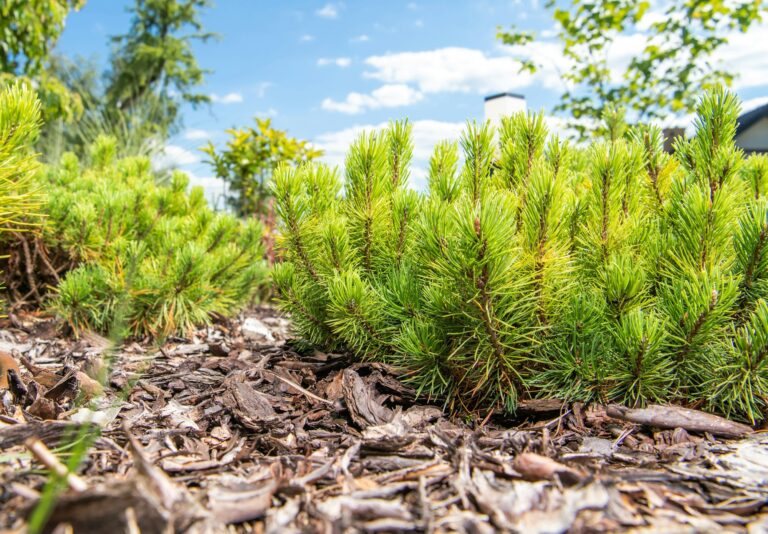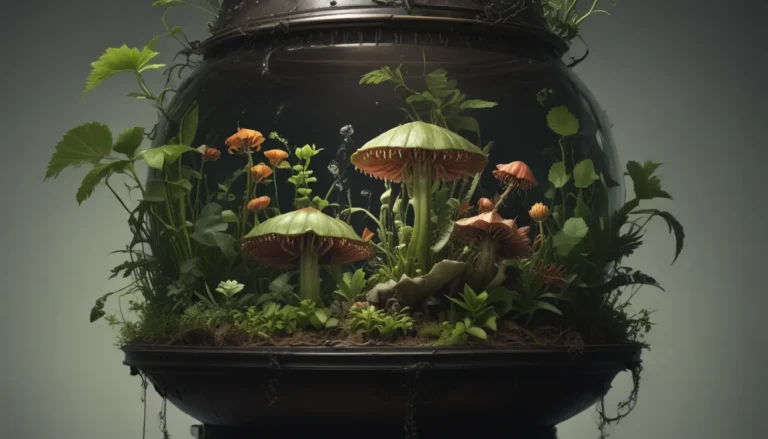Growing and Caring for Tortoise Plants: A Comprehensive Guide

Have you ever thought about shaking up your houseplant collection with something different? How about a tortoise plant? These unique plants, scientifically known as Dioscorea elephantipes, are sure to catch your eye with their massive, rounded, and plated stems that resemble a tortoise’s shell.
While tortoise plants are visually stunning, they require proper care and nurturing to thrive. In this comprehensive guide, we will explore everything you need to know to successfully grow and care for these fascinating plants.
What You’ll Learn
Here’s a sneak peek of what we will cover in this article:
- What are Tortoise Plants?
- How to Propagate Tortoise Plants
- Growing Tips and Techniques
- Pruning and Maintenance
- Where to Buy Tortoise Plants
- Managing Pests and Diseases
- Best Uses for Tortoise Plants
- Quick Reference Growing Guide
What Are Tortoise Plants?
Tortoise plants, or Dioscorea elephantipes, are native to the Cape Province of South Africa and belong to the large genus of the Dioscoreaceae family. These plants are known for their bulbous, aboveground stem called a caudex, which resembles both a tortoise shell and an elephant’s foot.
In their natural habitat, tortoise plants grow climbing deciduous vines with green, heart-shaped leaves. While outdoors, these plants can reach a height of nine feet and a spread of seven feet. However, when grown indoors, they typically stay much smaller.
Tortoise Plant Propagation
If you’re interested in growing your tortoise plant, you can propagate them from seeds or transplant established specimens.
Sowing Seeds
To grow tortoise plants from seeds, start by removing the wings from the seeds and planting them in a well-draining growing medium in a seed tray. Keep the seeds moist, and place them in a location with bright, indirect sunlight for germination.
After about two to three weeks, the seeds should begin to sprout. Once the seedlings are about a year old, you can transplant them into individual containers filled with a tropical potting mix or soil suitable for cacti and succulents.
Transplanting
Transplanting an established tortoise plant or seedling into a larger pot is also an option. Make sure to select a container with drainage holes that are slightly larger than the caudex’s diameter.
Fill the pot with a cactus-specific potting mix, plant the tortoise plant, and water it thoroughly. This process will give your tortoise plant the space it needs to continue growing.
How to Grow Tortoise Plants
Tortoise plants are relatively low-maintenance plants that can thrive with minimal care. Here are some key tips on how to grow tortoise plants successfully:
Climate and Exposure Needs
Tortoise plants prefer heat and can tolerate a wide range of temperatures. They require bright, direct sunlight for their vines, leaves, and flowers, while the caudex prefers indirect light or shade.
Indoors, placing your tortoise plant near a window where it can receive both direct sunlight and shade is ideal.
Soil Needs
Tortoise plants thrive in organically-rich, sandy loam in their natural habitat. For indoor cultivation, use a cactus-specific potting mix with a pH of 5.5 to 6.5 to ensure optimal growth.
Water and Fertilizer Needs
Once established, tortoise plants require less frequent watering. Allow the soil to dry out completely between waterings, especially during dormancy periods. Fertilize the plant monthly with a quarter-strength fertilizer solution.
Growing Tips
Here are some additional tips to help you cultivate healthy tortoise plants:
- Provide full sun for the vegetative shoots and partial shade for the caudex.
- Use a well-draining growing medium to prevent waterlogging.
- Allow the soil to dry out completely between waterings to avoid root rot.
Pruning and Maintenance
Regular pruning of dead, damaged, or sickly vines is essential to maintain the overall health of your tortoise plant. Remove spent flowers and cut back the vines during dormancy periods to encourage new growth.
Provide a support structure such as a wooden stake or trellis for the vines to climb, and repot the plant when it outgrows its current container.
Where to Buy
While tortoise plants may not be as common as other houseplants, you can find them at niche plant nurseries, specialty shops, and horticultural trade shows. Reach out to fellow gardening enthusiasts to inquire about obtaining a tortoise plant through seeds or transplants.
Managing Pests and Disease
Indoor tortoise plants are less susceptible to pests and diseases compared to outdoor plants. However, it’s crucial to monitor and address any issues promptly. Here are some common pests to watch out for:
Insects
- Aphids: Use horticultural oil or insecticidal soap to control aphids.
- Mealybugs: Treat mealybugs with insecticidal soap.
- Scale: Remove scale insects manually or with insecticidal soap.
Root Rot
Prevent root rot by avoiding overwatering and ensuring proper drainage in the potting medium. Prune any rotted roots to prevent further damage to the plant.
By following these tips, you can maintain a healthy and thriving tortoise plant in your home.
Best Uses for Tortoise Plants
Tortoise plants are versatile and can serve as a central specimen or an accent in a houseplant display. Their unique appearance and striking caudex make them an excellent conversation piece and a focal point in any room.
Place your tortoise plant in a prominent location where guests can admire its unusual features and appreciate its beauty.
Quick Reference Growing Guide
For a quick overview of tortoise plant care, refer to this summary:
- Plant Type: Deciduous flowering perennial vine
- Native to: South Africa
- Water Needs: Low
- Hardiness (USDA Zone): 9b-12
- Maintenance: Moderate
- Bloom Time/Season: Fall to winter
- Tolerance: Drought, heat
- Exposure: Bright, indirect light
- Soil Type: Cactus and succulent growing medium, fertile sandy loam
- Time to Maturity: 10 years
- Soil pH: 5.5-6.5
- Spacing: 1 inch away from container edges
- Soil Drainage: Well-draining
- Planting Depth: 1/3 inch (seeds), depth of root system (transplants)
- Uses: Accent, houseplant, specimen
By following these guidelines, you can cultivate a healthy and thriving tortoise plant in your home.
You Gotta Flex the Caudex
To truly appreciate the beauty of a tortoise plant, you must showcase its unique caudex. By following the cultivation practices outlined in this guide, you can grow a stunning tortoise plant that will be the envy of your houseplant collection.
Do you have any additional questions or experiences to share about growing tortoise plants? Feel free to leave a comment below!
For more animal-themed houseplants, check out these articles:
- How to Grow and Care for Elephant Bush Indoors
- How to Grow and Care for Kangaroo Ferns
- How to Grow Bird of Paradise Indoors
Remember, a little TLC goes a long way when it comes to caring for your tortoise plants. Happy growing!





